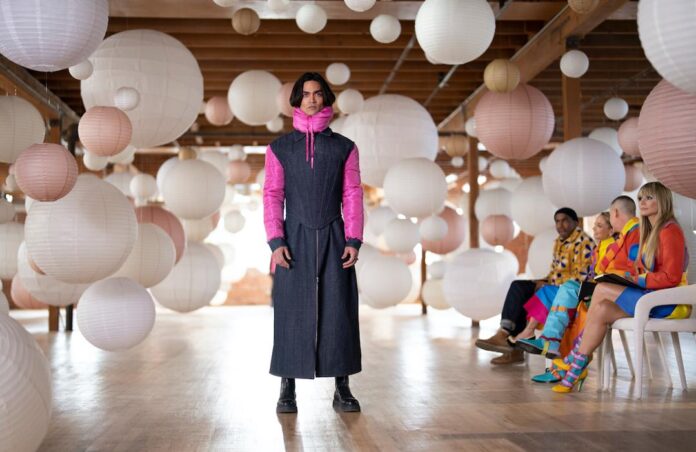While finding a new reality show to watch, concepts may seem uninventive, repetitive, or uninteresting. Yet, sometimes a rehash turns out to be a pleasant surprise. In 2020, I started watching Making the Cut featuring Heidi Klum and Tim Gunn, both recognizable for their work on Project Runway. Fast forward to 2022, the third season, consisting of eight episodes, was released over four weeks on Amazon Prime Video. The season features 10 contestants from around the world who compete to win US$1,000,000. Winners can use their winnings to expand their brand and business, receive mentoring from Amazon, and be given the opportunity to promote their collections in the Making the Cut online store. The third season has Nicole Richie and Jeremy Scott acting as judges, with additional guest judges throughout the season.
While I am not big on fashion, I love watching reality competition shows. I really enjoy the design process, seeing the results, creativeness, limitations, and time constraints based on the briefs. What makes Making the Cut stand out from other shows is that designers do not create exaggerated and impractical designs that are only usable for the runway or red carpets. Instead, they need to create two outfits during every challenge; a runway look, and an accessible look inspired by the runway look. These have to be more commercial and wearable in the real world. I could see myself wearing pieces from the collections.
While the show focuses on creating more commercialised looks, the show places importance on creating and maintaining a brand within the competition, as well as individuality and standing out as a designer. Although most did not hit the mark for the festival wear challenge in episode five, it nailed the idea that everyone has a different vision in designing based on preferences, experiences, and where they are from. For example, one contestant was influenced by Carnival in the Dominican Republic while another looked to the cherry blossom festival in China. The judges did not “get” several outfits without further explanations, as they assumed festivals relate to Coachella. Yet it’s refreshing that outfits coming down the runway differ in styles and interpretations.
In comparison to the previous two seasons, season three felt rather short. It was as though filming was condensed to reduce expenses regarding the working space and living arrangements. This was reflected in the time constraints placed on the contestants during some challenges. For example, having seven hours to create two outfits seems insane. It is good for drama, but the work can be heavily impacted and doesn’t really allow contestants to take risks. With more time to create outfits, they would be able to plan more marketable designs — and create more thoughtful and polished pieces.
This season’s biggest downfall lies in Jeremy Scott’s judgement. Scott went from being a judge with a bit of criticism, whether good or bad, to simply being a judgy asshole throwing a tantrum. For example, one scene depicts him aggressively throwing a notebook to the ground because he had nothing to write about because everything was “shit.” The sense of toxicity and escalation of Scott’s tantrums were completely unexpected, uncomfortable, and unprofessional. With notable tears from many of the contestants, I can only imagine that it was worse in person and editors made it seem like the rant was less awful than portrayed. He defended it by stating, “I treat you this way because I love you.” Regardless of the money at stake, this behaviour is not justifiable in any setting.
While the designers might not become household names, the series shows progress, hard work, creativity, and general talent. The competitions highlight growth, taking criticism, and implementing it for the future. While set in fashion, this factor makes it relatable to the real world — whether it is writing, assignments, or work. It’s fascinating to watch the process and I will be patiently waiting for a fourth season. Going forward, I am hoping for modifications in the judging and giving more time to contestants to help unleash their full potential.


